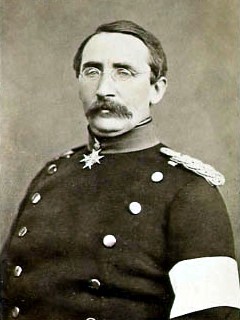
August Karl Friedrich Christian von Goeben, was a Prussian infantry general, who won the Iron Cross for his service in the Franco-Prussian War of 1870–71.
The 13th Division was a unit of the Prussian/German Army. It was formed in November 1816 in Münster in Westphalia as a troop brigade and became the 13th Division on September 5, 1818. The division was subordinated in peacetime to the VII Army Corps. The division was disbanded in 1919 during the demobilization of the German Army after World War I. The division was recruited primarily in the Prussian Province of Westphalia and two small principalities in the Westphalian region, Lippe-Detmold and Schaumburg-Lippe.
The 3rd Division was a unit of the Prussian/German Army. It was formed in Stettin in May 1816 as a Troop Brigade (Truppen-Brigade). It became the 3rd Division on September 5, 1818. From the corps' formation in 1820, the division was subordinated in peacetime to the II Army Corps. The 3rd Division was disbanded in 1919 during the demobilization of the German Army after World War I.
The 4th Division was a unit of the Prussian/German Army. It was formed in Torgau on September 5, 1818. The headquarters moved to Stargard in 1820, where it stayed until 1852. In 1852, the headquarters moved to its final destination, Bromberg. From the corps' formation in 1820, the division was subordinated in peacetime to the II Army Corps. The 4th Division was disbanded in 1919 during the demobilization of the German Army after World War I.
The 14th Division was a unit of the Prussian/German Army. It was formed in November 1816 in Trier as a troop brigade and became the 14th Division on September 5, 1818, also relocating its headquarters to Düsseldorf. The division was subordinated in peacetime to the VII Army Corps. The division was disbanded in 1919 during the demobilization of the German Army after World War I. The division was recruited in the Prussian Province of Westphalia and the Rhine Province, primarily in the densely populated Lower Rhine region.
The 15th Division was a unit of the Prussian/German Army. It was formed as the 16th Division on September 5, 1818, in Cologne from the 4th Brigade of the Army Corps in France. It became the 15th Division on December 14, 1818. The division was subordinated in peacetime to the VIII Army Corps. The division was disbanded in 1919 during the demobilization of the German Army after World War I. It was recruited in the densely populated Prussian Rhine Province, mainly in the Lower Rhine region.
The 18th Division was a unit of the Prussian/German Army. It was formed on October 11, 1866, and was headquartered in Flensburg. The division was subordinated in peacetime to the IX Army Corps. The division was disbanded in 1919 during the demobilization of the German Army after World War I. The division was recruited primarily in Schleswig-Holstein.
The 20th Division was a unit of the Prussian/German Army. It was formed on October 11, 1866, and was headquartered in Hannover. The division was subordinated in peacetime to the X Army Corps. The division was disbanded in 1919 during the demobilization of the German Army after World War I.
This is an order of battle of the French and German Armies at the beginning of the Franco-Prussian War in 1870.
The 3rd Royal Bavarian Division was a unit of the Royal Bavarian Army which served alongside the Prussian Army as part of the Imperial German Army. The division was formed on November 27, 1815, as an Infantry Division of the Würzburg General Command. It was called the 3rd Army Division between 1822 and 1848, again between 1851 and 1859, and again from 1869 to 1872. It was called the 3rd Infantry Division from 1848 to 1851 and was named the Nuremberg General Command from 1859 to 1869. From April 1, 1872, until mobilization for World War I, it was the 3rd Division. In 1901, it had swapped division numbers with the 5th Division. In Bavarian sources, it was not generally referred to as a "Royal Bavarian" division, as this was considered self-evident, but outside Bavaria, this designation was used for it, and other Bavarian units, to distinguish them from similarly numbered Prussian units. The division was headquartered in Nuremberg from 1815 to 1843, in Ansbach from 1843 to 1848, and then again in Nuremberg until 1901, when after the renumbering of divisions, it became the 3rd Division in Landau and the division in Nuremberg became the 5th Division. The division was part of the II Royal Bavarian Army Corps.

The 4th Royal Bavarian Division was a unit of the Royal Bavarian Army which served alongside the Prussian Army as part of the Imperial German Army. The division was formed on November 27, 1815, as an Infantry Division of the Würzburg General Command. It was called the 4th Army Division between 1822 and 1848, again between 1851 and 1859, and again from 1869 to 1872. It was called the 4th Infantry Division from 1848 to 1851 and was named the Würzburg General Command from 1859 to 1869. From April 1, 1872, until mobilization for World War I, it was the 4th Division. In Bavarian sources, it was not generally referred to as a "Royal Bavarian" division, as this was considered self-evident, but outside Bavaria, this designation was used for it, and other Bavarian units, to distinguish them from similarly numbered Prussian units. The division was headquartered in Würzburg. The division was part of the II Royal Bavarian Army Corps.
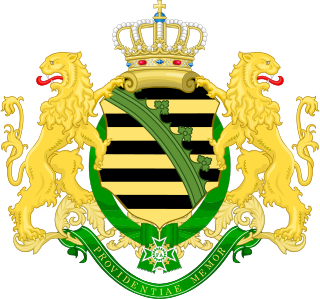
The Royal Saxon Army was the military force of the Electorate (1682–1807) and later the Kingdom of Saxony (1807–1918). A regular Saxon army was first established in 1682 and it continued to exist until the abolition of the German monarchies in 1918. With the formation of the Confederation of the Rhine by Napoleon the Royal Saxon Army joined the French "Grande Armée" along with 37 other German states.

Alexander Friedrich Adolf Heinrich von Zastrow was a Prussian general who served in the Austro-Prussian War and the Franco-German War.
Alphonse-Théodore Lecointe was a French general and politician.

Heinrich Karl Ludwig Adolf von Glümer was a Prussian general who served in the Austro-Prussian and Franco-Prussian wars.
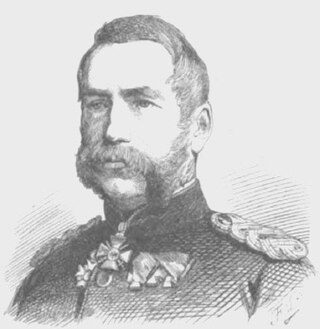
Peter Friedrich Ludwig von Weltzien was an Oldenburg-Prussian lieutenant general who served in the Austro-Prussian and Franco-Prussian wars.
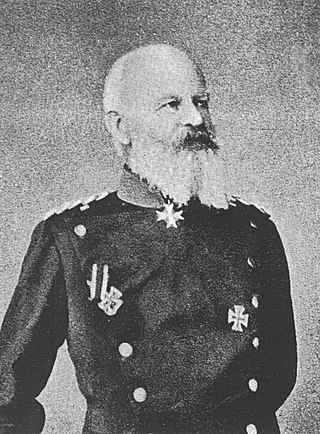
Theodor Alexander Viktor Ernst von Schoeler (1807-1894) was a Prussian General of the Infantry who served in the Austro-Prussian War and the Franco-Prussian War through several battles.

Christof Gottlieb Albert Freiherr von Barnekow was a Prussian General of the Infantry who commanded the 16th Division during the Franco-Prussian War and was a recipient of the Order of the Black Eagle.

Hermann Karl Rudolf Gebhard von Alvensleben (1809-1887) was a Prussian Generalleutnant who participated in the Austro-Prussian War and the Franco-Prussian War. He commanded the 1st Cavalry Division during the Battle of Königgrätz and commanded several Army Corps' during the Franco-Prussian War.
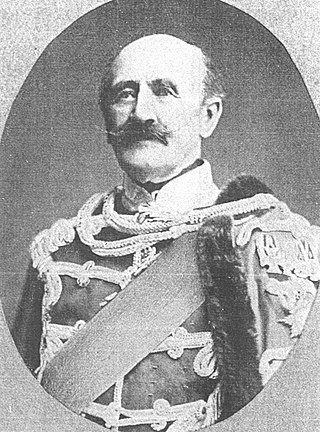
Otto Rudolf Benno Hann von Weyhern Sr. was a Prussian General of the Cavalry during the First Schleswig War, the Austro-Prussian War and the Franco-Prussian War. He commanded the 2nd Cavalry Division during the Battle of Königgrätz.










